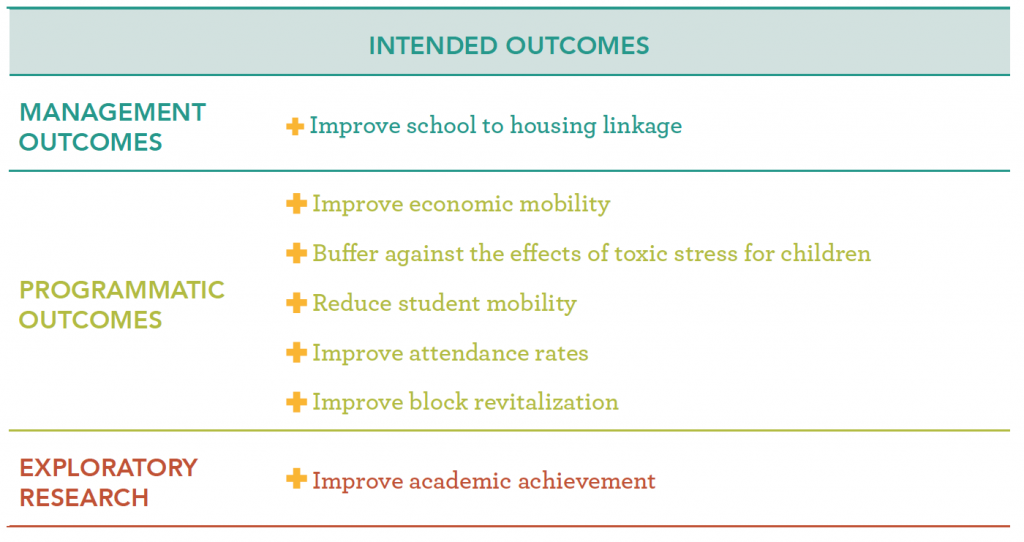The nearly $2 trillion in federal rescue dollars presents exciting prospects for states and districts to advance education innovations. One of the opportunities that state and local education agencies are likely overlooking is the opportunity to leverage an additional $4.9 billion in Housing and Urban Development HOME rescue dollars. These dollars can be used to establish school-centered housing for families with school-aged children experiencing housing instability, which in turn supports the educational and emotional outcomes for those students and families.
What is school-centered housing?
UPD, in partnership with Baltimore City Schools and the Baltimore Department of Housing and Community Development, developed an intervention model that uses affordable housing as a lever to improve educational outcomes and school enrollment stability for elementary-aged children in neighborhood schools. The housing department will work with affordable housing providers to facilitate the rehabilitation and maintenance of the properties, and the district will identify the families of students in need of housing interventions. A full description of the School-Centered Housing Response (SCHORE) model can be found here.

How do I start talking to my housing department about SCHORE?
HUD’s HOME program is designed to increase the supply of affordable housing for low income individuals and can be used for a variety of purposes, including helping community development corporations and other developers acquire, rehabilitate, or construct affordable rental housing (fundamental to the SCHORE model). The HOME rescue dollars (compared to the annually appropriated HOME funds) work must be tied to COVID-related recovery, which we think easily aligns with the SCHORE model’s efforts to house what is likely to become an increasingly large number of homeless families now that the eviction moratoriums across the country are being lifted.
Check with your state and local housing agencies to see if they have provided information on how they are intending to use these dollars. Many state and local governments are still in early planning stages and are open to ideas. Ask for a meeting with your housing department to inquire about how these funds (and perhaps other funds, like HUD’s Community Development Block Grant and your local Housing Trust Fund dollars) can be used to support a SCHORE model. Bring the white paper with you, but you can use these talking points as a start.
- The National Child Traumatic Stress Network’s 2005 publication Facts on Trauma and Homeless Children states that compared to housing stable children, homeless children are twice as likely to repeat a grade, have twice the rate of learning disabilities, and three times the rate of emotional and behavioral problems.
- Economic repercussions of COVID are only going to increase the number of housing unstable students in the coming year, particularly as eviction moratoriums lift.
- Investing in a school-centered housing model creates the opportunity for housing and education agencies to amplify their respective desired outcomes through their collaboration, including reducing toxic stress, supporting family health and financial well-being, and improving neighborhood stability.
I realize housing and education organizations don’t collaborate frequently, and for many readers these types of conversations are very new. Reach out (awillemssen@updconsulting.com) if you would like to discuss the model further or need help starting a conversation with your housing counterparts.
Jordan Brown supported the research for this post.

Leave a Reply
The comments are closed.